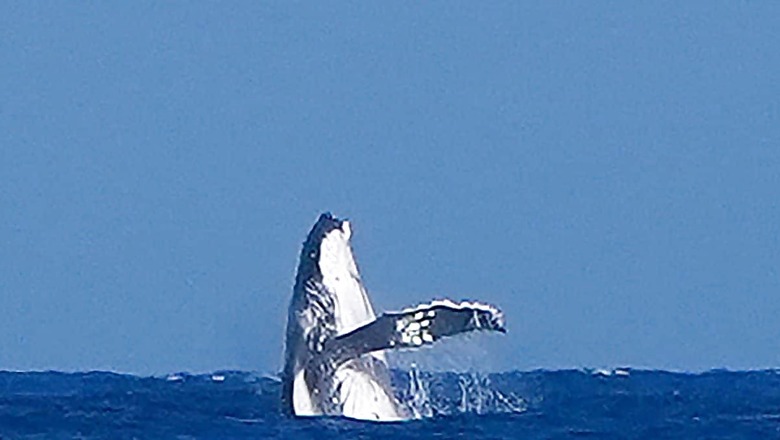
views
Tahiti, a French Pacific Island, is famous for whale watching. It is one of the few spots in the world where tourists can swim and see whales up close. However, conservationists and scientists are concerned about the increasing number of whale watchers. They highlight that the increased number of travellers is posing a risk to the species already under threat by climate change.
According to a report by Hindustan Times, Agnes Benet, a biologist and founder of the Polynesian association Mata Tohora, which works to protect marine mammals, says, “We need to limit the number of boats around the whales and dolphins. It’s a question of managing the activity, which needs to be done quickly.” Her association is also campaigning to introduce a “no whale-watching” period, from 2:00 pm onwards, to allow them to rest.
A 2019 study on marine species published in the journal PLOS One sheds more light on why conservationists are concerned. According to the study, swimming and whale-watching activities both trigger ‘avoidance responses’ in humpback whales. It can impact their behavioural reaction, as well as their energetic balance and long-term fitness levels. Whales were observed moving more during resting periods due to the swimmers and boats, which had an impact on their health. This is especially concerning for mother-and-calf couples.
Humpback whales aren’t indigenous to Tahiti. Every year, between July and November, whales travel around 6,000 km from Antarctica to Tahiti for its warm weather, which provides an ideal mating environment. Male humpback whales attract females with intricate songs and spectacular aerial displays known as breaching.
These whales can mate and give birth in the waters of French Polynesia, located amid the South Pacific Ocean with excellent scenery making them perfect for whale breeding and mating. Whale-watching is an important source of revenue in French Polynesia. As a result, authorities have made initiatives to promote responsible eco-tourism to protect cetaceans over the years. However, the surge in whale-watching activity throughout the years has made it a concern for the species.
Moreover, the increased presence of swimmers has posed a risk for humans too. A 29-year-old female swimmer was seriously injured off the coast of Western Australia after becoming trapped between two whales in 2019.
















Comments
0 comment